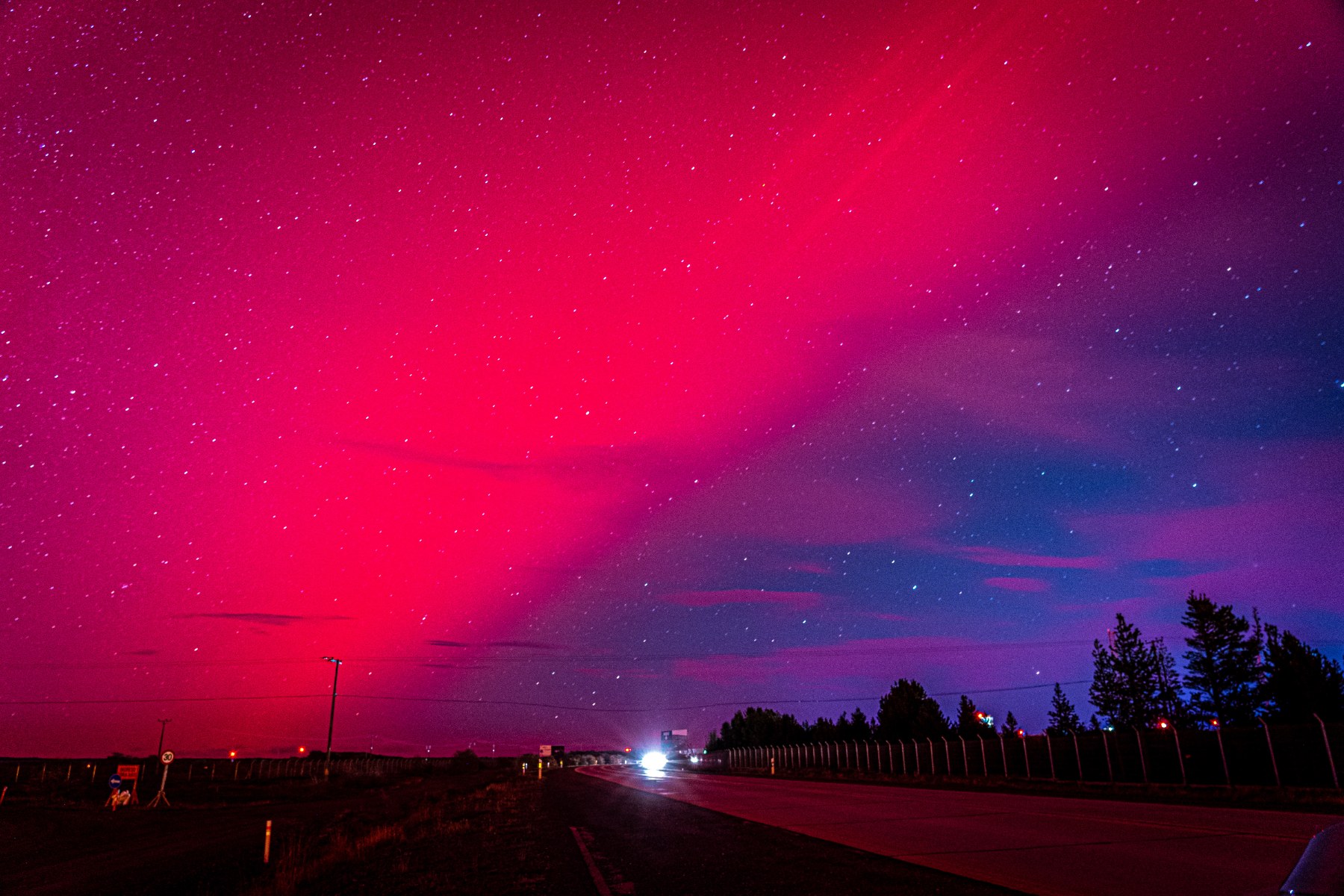
Agence France-Presse
The spectacular auroras that danced across the sky in many parts of the world over the weekend are fading, scientists said Monday, as the massive sunspot that caused them turns its ferocious gaze away from Earth.
Since Friday, the most powerful solar storm to strike our planet in more than two decades has lit up night skies with dazzling auroras in the United States, Tasmania, the Bahamas and other places far from the extreme latitudes where they are normally seen.
But Eric Lagadec, an astrophysicist at France’s Observatoire de la Cote d’Azur, told AFP that the “most spectacular” period of this rare event has come to an end.
The first of several coronal mass ejections (CMEs) – expulsions of plasma and magnetic fields from the Sun – came just after 1600 GMT Friday, according to the US-based National Oceanic and Atmospheric Administration (NOAA).
The event was later upgraded to an “extreme” geomagnetic storm – the first since the “Halloween Storms” of October 2003 that caused blackouts in Sweden and damaged power infrastructure in South Africa.
Excitement over the phenomenon – and otherworldly photos of pink, green, and purple night skies – broke out across the world, from southern Europe to Australia’s island state of Tasmania.
The storm had been forecast to intensify again until 0600 GMT Monday, the NOAA said, adding that auroras could be viewable as far south as New York.
But thousands of people who came out on Sunday night in the hope of seeing the aurora borealis over the Joshua Tree National Park in California instead only saw the glittering stars of the Milky Way.
‘One fabulous night’
Lagadec said that while there were further solar outbursts on Sunday, it is unlikely that more auroras will be visible to the naked eye in lower latitudes such as in France.
“Only the most experienced photographers will be able to capture them” in such areas, he said.
The geomagnetic storm was caused when multiple CMEs emanating from a massive sunspot cluster 17 times wider than Earth arrived at our planet at around the same time.
However the sunspot has now moved to “the edge of the Sun, (so) we do not expect the next coronal mass ejections to head in Earth’s direction,” Lagadec said.
This means the solar storm is expected to “progressively decrease in the coming days,” said Quentin Verspieren, the European Space Agency’s space safety programme coordinator.
Pointing out that hopeful aurora spotters were “mostly disappointed” on Sunday night, Verspieren told AFP it was unlikely that the celestial spectacle would be repeated on Monday or Tuesday.
“There was one fabulous night, but it has passed,” he said.
“However, the behavior of the Sun is really hard to predict.”
And we are only just entering a period of increased solar activity that occurs every 11 years when the Sun’s magnetic pole flips, which means there could be further extreme events in the next year or two, he added.
When charged particles from solar winds are captured by Earth’s magnetic field, they accelerate towards the planet’s magnetic poles, which is why auroras are normally seen there.
But during periods of heightened solar activity, the effects extend farther toward the equator.
Satellites weathered storm
Unlike during 2003’s solar storms, no major disruptions to power or communications networks appear to have been reported this time around.
Elon Musk’s satellite internet operator Starlink said on X that its thousands of satellites in low Earth orbit had “weathered the geomagnetic storm and remain healthy”.
Unlike solar flares, which travel at the speed of light and reach Earth in around eight minutes, CMEs travel at a more sedate pace, with officials putting the current average at 800 kilometers (500 miles) per second.
Fluctuating magnetic fields associated with geomagnetic storms induce currents in long wires, including power lines, which can lead to blackouts. Long pipelines can also become electrified.
Spacecraft are at risk from high doses of radiation, although the atmosphere prevents this from reaching Earth.
NASA can ask astronauts on the International Space Station to move to better-shielded places within the outpost.
